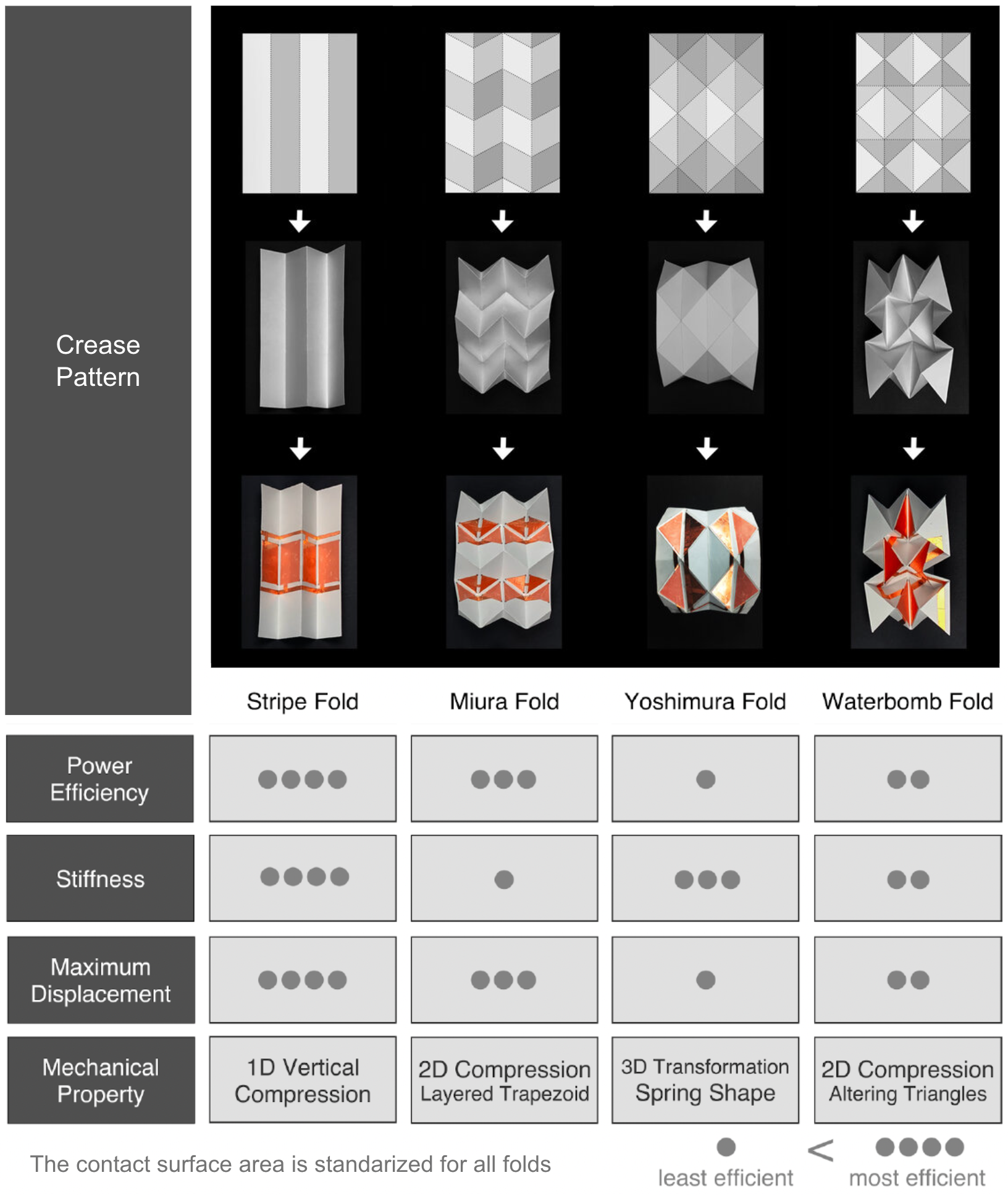Self-Powered Interfaces: Combines paper creases with triboelectric nanogenerators (TENG) for energy-harvesting, powering sensors and actuators.
Customizable Design Editor: Enables users to create crease patterns, estimate power output, and export files for fabrication.
Integrated Fabrication Workflow: Streamlines design-assembly process to create self-powered paper interfaces with ease.
Expressive Interaction Mechanisms: Explores embodied push-and-pull interactions with applications across scales.
Customizable Design Editor: Enables users to create crease patterns, estimate power output, and export files for fabrication.
Integrated Fabrication Workflow: Streamlines design-assembly process to create self-powered paper interfaces with ease.
Expressive Interaction Mechanisms: Explores embodied push-and-pull interactions with applications across scales.













